Posterolateral approach to the Volkmann fragment in the malleoli
1. General considerations
The patient is placed prone.
The posterolateral approach gives direct access to the Volkmann fragment.
This approach also allows fixation of the fibular fracture, with a plate placed on the posterior surface.
Care should be taken not to injure the sural nerve as it runs parallel to the lateral margin of the achilles tendon.
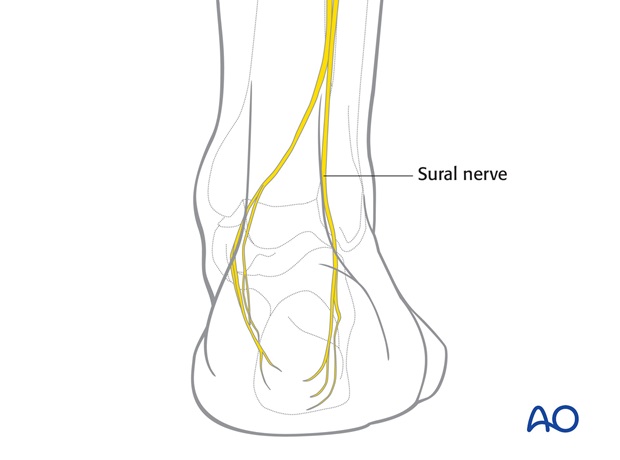
2. Incision
Make a 10-15 cm longitudinal incision midway between the fibula and the achilles tendon.
Even in obese patients with posttraumatic swelling around the ankle, these landmarks can be palpated.
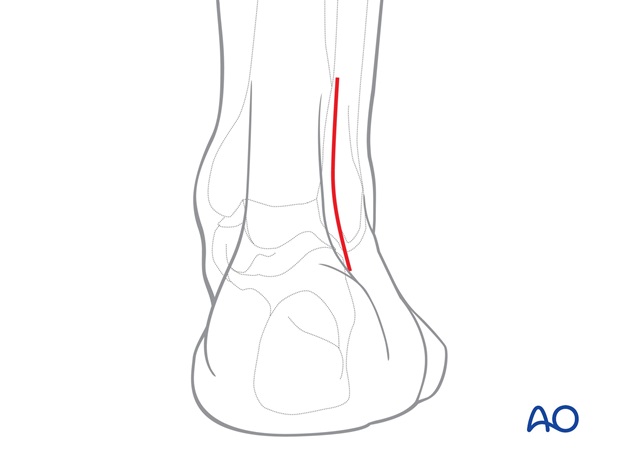
3. Superficial surgical dissection
Dissect through the skin and the subcutaneous tissues to expose the peroneal muscles.
The sural nerve normally lies medial to this incision but care should be taken not to damage it if it is exposed by the incision.
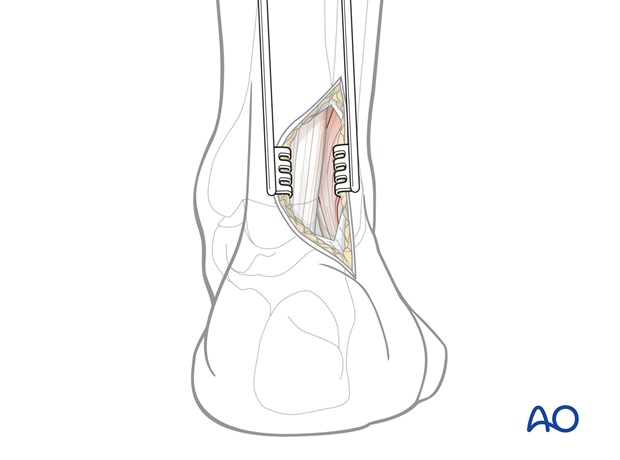
4. Deep surgical dissection
Dissect the medial side of the peroneal muscles and displace them laterally with a self-retaining retractor placed against the achilles tendon.
This will expose the Volkmann fragment.
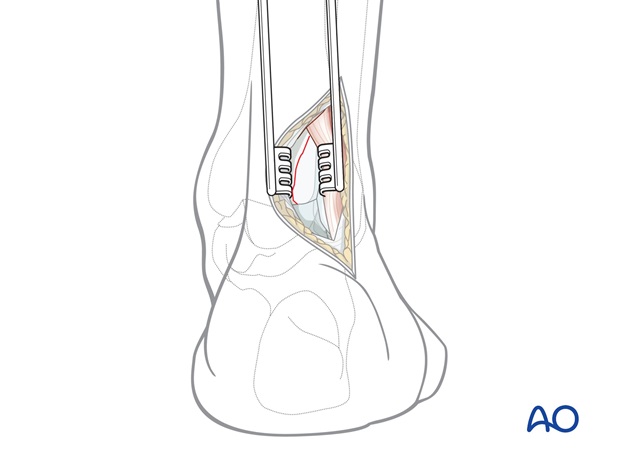
After the Volkmann fragment has been fixed, the peroneal muscles are retracted medially to expose the fibular fracture, which can then be plated through this incision.
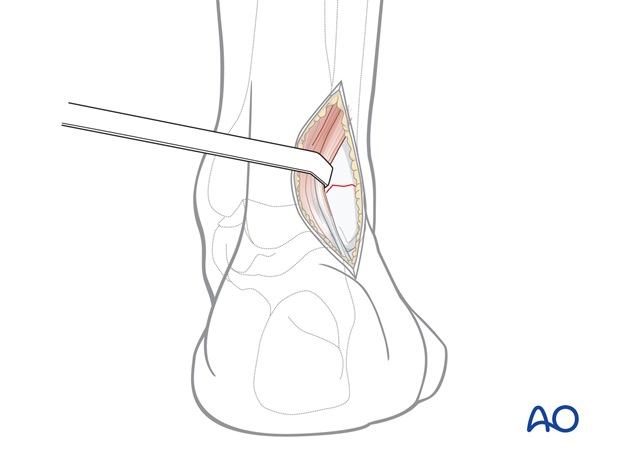
5. Closure
At the end of the procedure, the peroneal muscles are allowed to return to their anatomic position, covering the hardware.
The deep fascia may be closed over the peroneal muscles if this is easy to do without tension.












